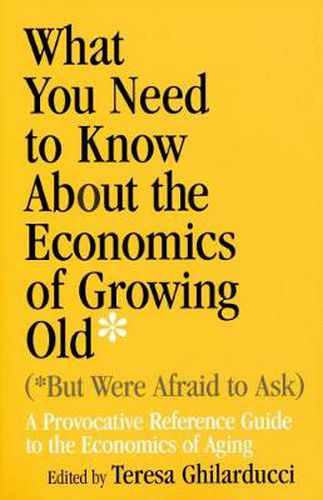Readings Newsletter
Become a Readings Member to make your shopping experience even easier.
Sign in or sign up for free!
You’re not far away from qualifying for FREE standard shipping within Australia
You’ve qualified for FREE standard shipping within Australia
The cart is loading…






With the aid of her Economics of Aging class, Teresa Ghilarducci has compiled this comprehensive sourcebook as a guide for politicians, economists, journalists, students, and ordinary Americans through the maze of Social Security and the economics of growing old in America.
What You Need to Know About the Economics of Growing Old (But Were Afraid to Ask)is divided into five sections. The first section addresses the status of the elderly and explores such issues as the average life expectancy and the number of elderly living in poverty. The second deals with the structure of the Social Security system and its disbursements of benefits. The third traces the economic path to old age. The fourth considers changing social norms, including the increase in the number of women in the workforce. The final section looks at what happens when the elderly work for pay.
This book will be valuable from the classroom to the halls of Congress. Simply put, it contains information everyone should know.
$9.00 standard shipping within Australia
FREE standard shipping within Australia for orders over $100.00
Express & International shipping calculated at checkout
With the aid of her Economics of Aging class, Teresa Ghilarducci has compiled this comprehensive sourcebook as a guide for politicians, economists, journalists, students, and ordinary Americans through the maze of Social Security and the economics of growing old in America.
What You Need to Know About the Economics of Growing Old (But Were Afraid to Ask)is divided into five sections. The first section addresses the status of the elderly and explores such issues as the average life expectancy and the number of elderly living in poverty. The second deals with the structure of the Social Security system and its disbursements of benefits. The third traces the economic path to old age. The fourth considers changing social norms, including the increase in the number of women in the workforce. The final section looks at what happens when the elderly work for pay.
This book will be valuable from the classroom to the halls of Congress. Simply put, it contains information everyone should know.